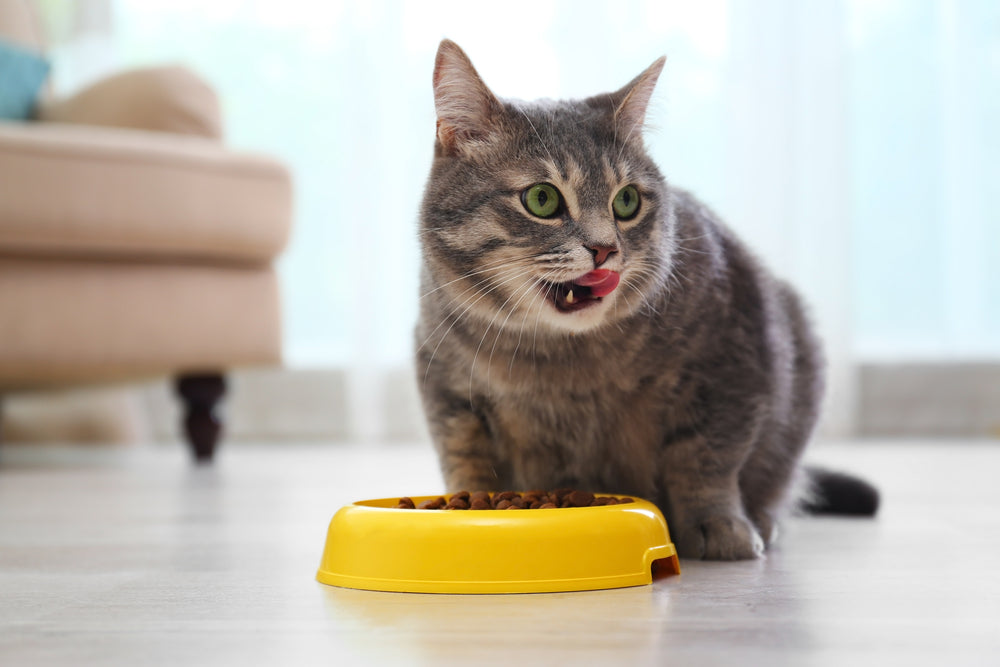Herding Cats: How to Potty Train a Cat

Did you know owning a cat can lower psychological stress and anxiety, and even lower your risk for a heart attack1 There's a reason they are one of the most popular pets, especially for apartment living, their calm natures and easy trainability make them ideal.
That is, if you can get them to use a litter box reliably.
KITTEN LITTER BOX TRAINING
Here's the good news: When it comes to cat potty training, your kitten is prewired to want to do it. According to WebMD, Kittens begin to dig in and use dirt and dry, loose material at about 4 weeks old without ever having observed their mothers doing so.2 Since litter boxes cater to these natural tendencies, with a little effort you can ensure your kitten grows into a confident cat who is reliably house-trained.
STEP 1: Get the box
When picking a box for potty training a cat, remember that even if your kitten is little, she will need a litter box she can easily access. Open Litter Pans are the best option for kittens. As she develops into a fully grown cat, she'll need more room (and perhaps privacy) and you'll need to purchase a larger litter box. That said, make sure at least one side is low enough that she can access the box without any trouble, one to two inches from the ground.
STEP 2: Make it private
Cats are notoriously shy about their restroom time. Be sure to place the litter box away from areas where there's constant activity, like a hallway or kitchen. Cats like to have a little privacy, so a laundry room or even a dark corner will help her feel more comfortable. And once you've chosen a spot, leave the box there to eliminate any confusion.
STEP 3: Time it right
After your kitten eats or wakes from a nap, put her in front of the box. When she goes, praise her, and your new little one will get the idea pretty quickly that the litter box is a safe place to eliminate.
*Pro tip: When your kitten is brand new to her litter box, you can help her remember where to go using smell. It can even help for the first week to keep a piece of her feces tucked behind the litter box (wrapped in tissue for sanitation), so even when you clean the litter, a familiar smell from her remains. Once the kitten is trained, discard the example and disinfect the area.
STEP 4: Don't scold
Cats (and animals, generally) don't know human languages. You knew that, of course, but sometimes when your new pet misbehaves or goes to the bathroom in the wrong place, there's the urge to yell or berate her. Unfortunately, unlike using your words to teach children manners, you can't do that with your kitten. If your kitten has an accident, clean and disinfect the area completely and continue consistently doing Step 3. If you sense there is a problem with continual accidents after a few weeks, contact your veterinarian.
CAT LITTER BOX TRAINING
All the same steps of kitten training apply, but remember with an adult cat, she has already formed consistent bathroom habits. Most cats adopted as adults have been litter box trained already. Be sure to check with the current owners or adoption agency to get the right brand of litter your cat uses. If you wish to switch, make the adjustment slowly, a few scoops at a time so your new cat has time to adjust.
No matter what kind of cat you get, you are welcoming a wonderful new addition to your family. By taking the time to make your litter box accessible and clean for your new cat or kitten, you can ensure that you will have a well-trained cat with few problems.
Sources:
- Cat Owners Have Lower Heart Attack Risk, Study. Medical News Today. MediLexicon International Ltd., 25 Feb. 2008. Web. 09 March 2015.
- Litter Box Training for Cats and Kittens. WebMD. Web. 07 March 2015.
Related posts
View all-

Wet Vs. Dry Cat Food: Which is Better?
As a caring cat owner, you always want the best for your furry friend, especially with their food. You typically have two choices: dry cat food in a bag or canned wet food. Whether you've just brought home a new kitty or are looking to transition to a new food, the decision process can be overwhelming, and understanding the impact of each on your cat's diet is essential. Read Article -

Celebrate National Pet Week: Fun Ideas to Celebrate with Your Pet
National Pet Week is right around the corner, so it's time to plan how you're going to celebrate! While we're sure you celebrate your pet all day every day... Read Article -

5 Simple Tips to Make Sure Your Cat Drinks Enough Water
Ensuring your cat stays hydrated is important, but it can be challenging since many cats don't drink enough water. Dehydration can lead to kidney disease and other health issues. Fortunately, you can encourage your cat to drink more with a few simple changes. Read Article




